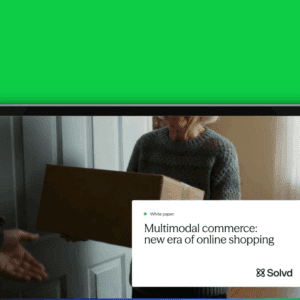By Stephan Schambach, NewStore

“The king is dead! Long live the king!” This proclamation dates back to the 13th century, and ensured a smooth, uninterrupted momentum of rule. Rather than be without a monarch, even for a few hours, it was essential to declare loyalty to the new king immediately upon the passing of his predecessor.
So it goes, in some fashion, in the world of personal computing. The laptop is dead. Long live the mobile device! It may not have the same flair, but the spirit is the same. Our ceaseless drive toward ever more versatile and reliable mobile technologies has indeed reached the end of a particular era, the age of the laptop, and has moved into a new regime, in which smaller, lighter devices serve our needs through distributed and virtual channels.
Is it fair to declare the laptop as actually dead? Yes. Here’s why:
Wearable Beats Luggable
It is becoming more obvious with every passing day that the amount of time people spend on mobile and wearable devices is increasing – not only the amount of time, but also the proportion of all computing time. The trend is now accelerating to 90 percent. For entertainment, productivity, shopping, personal health, the apps are available on the smart device in a format equal to or better than that available on the laptop.
Every smartphone release steals another productivity advantage away from laptops, and this is especially true for Apple, whose history of innovation moves beyond “simple improvement upon the previous” to “changing the game completely.” The reasons for keeping a laptop close to hand diminish by the day.
Changing Human Behavior
Simply chasing the laptop’s productivity equivalent is a false goal. We should look instead at how human behavior has changed and how it continues to change because of mobile, as well as how mobile continues to change because of people. Productivity is only one aspect of peoples’ lives. Travel, commerce, and a thousand other priorities also come into play.
To create a mobile experience that is somehow reflective of this symbiosis, mobile developers offer features that are not possible in a laptop format, such as data from the accelerometer, GPS, as well as receiving feedback on the surrounding environment based on the proximity to other devices. Simple examples of this include fitness tracking, electronic boarding passes, coffee shop loyalty cards, and the convenience of checkout-free instant payment systems like ApplePay and AndroidPay. These, and many more, contribute to a fully rich, branded experience that is difficult to replicate on a laptop. A laptop may have been more mobile than a PC, but it is no longer mobile enough.
What About Desktop Publishing?
For some, the difference between a mobile device and a laptop is like comparing a tricycle with a truck. One is for playing around, but when serious work needs to be done, a screen, a keyboard, and some office software is essential. It is ironic, when considering this comparison, to recall what the term “desktop publishing” actually implied: it spoke to the freedom people felt at no longer having to go to a print shop, with printing presses and locomotive-sized copy machines. Publishing could now happen at the desk. Flash forward another 20 years, and the same quantum leap has happened. Plenty of mobile apps exist to create documents, spreadsheets, and graphics, and even create and project slide presentations. For some, the keyboard is Bluetooth, for others, it is onscreen. Regardless, it is all inside the device.
Take the new Apple iPad Pro for example, which sports a 12.9 inch Retina display, multi-touch technology, and keyboard add-on. Apple CEO Tim Cook and I hold the same belief: it is no longer necessary to buy a PC or laptop. We now have an array of smaller portable devices available with which we can achieve not only the same computing tasks, but also richer, more contextually driven tasks.
Computing Horsepower
Reliance on a device for office-type tasks begs the question of where the computing power comes from. After all, a laptop, being a miniaturized computer, carries with it a dual power supply (AC and battery), a powerful processing chip, substantial storage capacity, as well as a variety of peripheral connection ports, including disk drives and A/V connectors.
With mobile, all of these things have vanished, residing instead in the cloud, and communicating via Bluetooth. For most app-level tasks, there is plenty of processing power inside current devices for 90 percent of what is required. For the rest, the cloud takes up the burden of the processing and the storage. All that is really needed is a decent signal.
This infinite power supply doesn’t just serve smartphones and tablets. It is also the platform upon which the Internet of Things will proliferate, with refrigerators, modular shipping containers, assembly robots, and herds of cows all communicating with those who need to know. The Internet of Things connects devices that do not need a computer to provide value. All of the components that resided within the body of a laptop have been parceled out, and in doing so have become more available.
Mobile Moments
The death of the laptop ushers in a generation of replacements that look nothing like their predecessors. Smartphones continue to transform, adapting to users’ preferred physical interactions (pinch, swipe, raise/lower), but will also mate with devices that are just now gaining traction. Google Glass, for example, fizzled out somewhat on its first attempt, but will return once public acceptance of wearables grows. The next iteration may appear built into stylish designer frames. Given the number of people who wear glasses, either full or part time, the heads-up display of Google Glass will inevitably thrive. Perhaps it will come back as contact lenses, not only offering information to the wearers, but transmitting essential biometrics to retailers, such as pupil dilation as an index of excitement over a product or price.
Forrester calls these “mobile moments,” and estimates 300 billion mobile moments happen each day. Many people get annoyed by traditional advertising, but when advertising is timed exactly to one’s needs, these become life-enhancing mobile moments. These events are not happening on a laptop – they are happening in the context of peoples’ lives.
Privacy vs. Value
The pushback against the highly personalized nature of these technologies has always come down to privacy and control. For many consumers, innovation presents itself as a danger before it becomes a need. But in just the same way these devices are changing, so is the customer base. Millennials, in particular, are happier than their predecessors to give personal information if they see they will get something back. It’s a matter of trading value for value. The previous advertising assumption was to scrape data without people knowing. This felt like a violation and was not well received. But a data-savvy generation is more comfortable with open trade. The new approach is “value for value.”
The laptop is dead, even if it does not quite know it yet. It was humankind’s first attempt to make computing power mobile, and it was a success in its day. The era of mobile is not about the replacement of one tech over another, though; it’s about satisfying a new set of needs.
Stephan Schambach is the Founder and CEO of NewStore. He is a serial entrepreneur with a proven track record of creating and growing successful tech companies in the United States and Europe. Under his leadership and vision, he brought Intershop and Demandware to IPO’s with multi-billion dollar market caps. Schambach is setting out to change the market once again, this time by solving the omnichannel problem facing so many retailers and brands. He has won numerous awards around the world for his technology and entrepreneurial leadership. He is also an investor in several software and green-tech startups.






